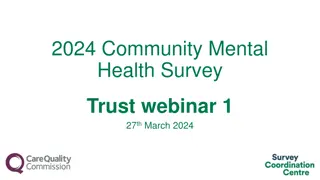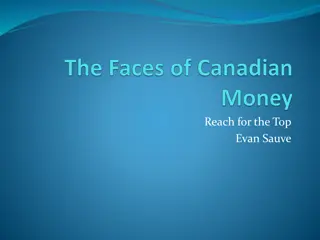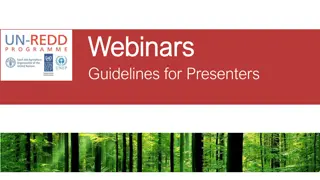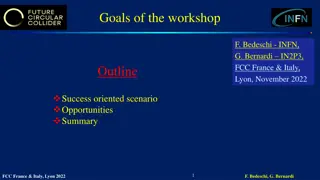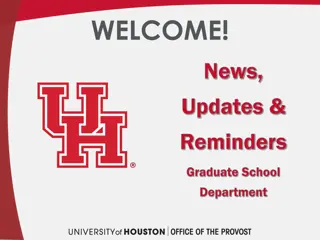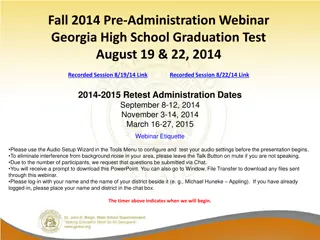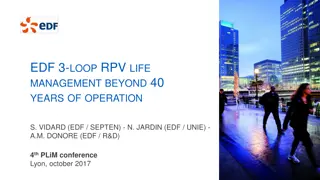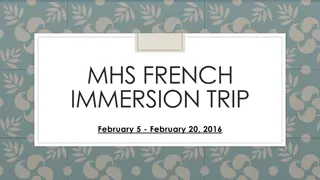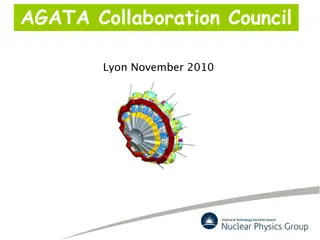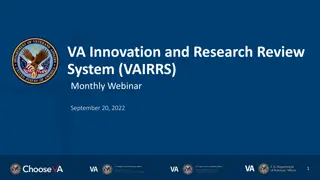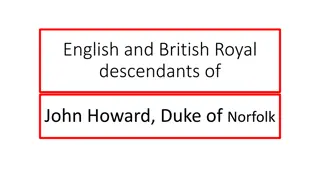
Exploring the Intersection of Medicine and Humanities
Dive into the evolving field of Medical Humanities, where the perspectives of various humanities disciplines are used to understand illness experiences and medical care. Explore pedagogical questions and framing purposes to enhance teaching in this unique field.
Download Presentation

Please find below an Image/Link to download the presentation.
The content on the website is provided AS IS for your information and personal use only. It may not be sold, licensed, or shared on other websites without obtaining consent from the author. If you encounter any issues during the download, it is possible that the publisher has removed the file from their server.
You are allowed to download the files provided on this website for personal or commercial use, subject to the condition that they are used lawfully. All files are the property of their respective owners.
The content on the website is provided AS IS for your information and personal use only. It may not be sold, licensed, or shared on other websites without obtaining consent from the author.
E N D
Presentation Transcript
COURSE DESIGN AND TEACHING FOR THE MEDICAL HUMANITIES
WHAT ARE THE MEDICAL HUMANITIES? Not a discipline! MH is a developing field that explores illness experience and medical care through the perspectives, materials, concepts, and methods of several humanities disciplines. There is no cannon of agreed on texts or work defining the field. This is a relatively young field (1960/70s+) / part of cultural response to modern institutions and epistemologies (postmodern). In the US developed out of medical schools and hospitals / response to reductivism of modern biomedicine / disconnect from the human experience of illness and care; in the UK develops out of humanities departments. In US has led to focus on improving clinical care, and les focus on robust, traditional humanities training. This is changing as we see more masters programs and undergraduate minors and majors. Exciting growth but much confusion about how to implement these programs and who they serve.
PEDAGOGICAL QUESTIONS & CHALLENGES Is MH just humanities training that happens to have a medical focus? Should you teach a MH course as you would any other humanities course? Who are my students? If many are STEM pre-health professional students, what do they expect from this course? Do I teach them as I would a humanities major? If my class has a mix of humanities students and pre- health students, how do I design and teach for both? I don t have a background in medicine. How much clinical or medical knowledge do I need to teach these courses? How do I make them relevant to students who will pursue careers in healthcare? How do I do this while remaining authentic to my training and to a rigorous humanities approach? What sorts of materials, assessments, teaching activities will facilitate success for you and your students within this unique pedagogical context?
1. FRAMING: PURPOSE Although your course may be themed around topic, period, or discipline, frame it to connect to illness experience or some aspect of medical care. This connection should be clear, either in the title or course description (or both). If possible, include a skills component related to a core humanities method that will be relevant to clinical care. Examples: A course on plague in literature should have some connection to the present, to the COVID pandemic or the AIDS epidemic. It should help us consider cultural and individual responses to these sorts of illness experiences. What happens to the humanity in medicine in these emergency situations? Skills component: because it focuses on close reading, this course can also help prepare students to listen attentively and compassionately to the stories of their future patients. A course on representations of illness in art might connect with the visual logics of diagnostic testing that has come to dominate medical care. How do visual technologies change how we experience illness, and what are some of the implications of these visual technolgies for patient experience? What is it like to be the object of medical imaging? Skills component: practices of close looking and observation are essential to clinical work. You need not focus your course entirely on the present, or medical care in the present, or on clinical application, but without any attempt to do so, your students may feel that it has little relevance to their future as a healthcare provider. One generic way to frame your course is to imagine it as a response to a contemporary problem in healthcare: reductionism, cultural competency, stigma, economic disparities, disability, etc.
RATIONALE FOR THE HUMANITIES IN MEDICINE A scientifically competent medicine alone cannot help a patient grapple with the loss of health and find meaning in illness and dying. Along with their growing scientific expertise, doctors need the expertise to listen to their patients, to understand as best they can the ordeals of illness, to honor the meanings of their patients narrative of illness, and to be moved by what they behold so that they can act on their patients behalf (Charon 2006).
RESOURCES Recommendation: Use the first few class meetings to justify the integration of the humanities into healthcare. There are many short introductions to the medical humanities / other resources for starting this conversation with students (including recordings of lectures by major voices in the field). Resources for framing specific disciplinary introductions (narrative, history, visual arts, etc.) are available. In general, the Health Humanities Consortium has excellent resources for teaching, including a syllabus repository. https://healthhumanitiesconsortium.com/
2. MATERIALS I recommend mixing traditional humanities materials with contemporary documents and sources directly related to medical care and illness experience. Examples: The course on plagues in literature could include Defoe s Journal of a Plague Year and first-person accounts of Covid from the perspective of patients and healthcare providers. The course on visual art might contrast body horror in contemporary film with patient accounts of undergoing certain medical procedures. Look to clinical and medical sources for materials. Many medical journals, like JAMA have creative writing sections. Extensive online publishing of narratives by healthcare providers and patients. Health Humanities Consortium Syllabus Repository: look for texts that bridge the clinical and the humanistic Be eclectic: no reason not to mix doctor s brief narratives about care with classic literature, with a short cartoon about patient experience, with a body horror film. Many of your students may be new to the humanities. You should challenge them with difficult and unfamiliar materials but also use welcoming and familiar sources.
3. ASSESSMENTS AND ASSIGNMENTS Mix traditional assignments with those that ask the student to investigate a healthcare issue relevant to the class topic or to their personal and future professional lives. Consider incorporating at least one creative assignment. Cut down slightly on traditional amounts of weekly material (reading/writing). If your students are new to the humanities, they will be overwhelmed and will scramble to keep up. Examples: For plagues and literature, consider requiring the students to conduct an illness ethnography of a relative or friend about their experience with Covid (source: Craig Klugman). Alternatively, they might interview a healthcare provider about their Covid experience and compare it to an account of plague from literature (Camus, for example). For the visual arts course, ask students to visit a clinical space and report on the visual experience. How might it contrast with the clinical spaces depicted in works of art?
CLASS ACTIVITIES Plan to mix standard activities with at least a few focused specifically on contemporary healthcare and/or illness experience. Weekly or bimonthly student presentations on a topic in contemporary healthcare related to course materials. Students can find examples easily online. Have students interview each other about healthcare and/or illness experiences. We are, to some extent, the experts about our how illness experiences. Give the students a space to share. Possible guest speaker visits by healthcare providers, patients, or experts working in community/public health.
BRAINSTORMING Take 5 minutes to consider how you might plan for each of these areas for a course in your discipline: 1. Framing 2. Materials 3. Assessments / Assignments 4. Activities
EXAMPLE: STORIES IN HEALTHCARE Framing: Medical knowledge and practice depend on science and stories to understand the complex reality of sickness. This class explores the myriad ways that stories and storytelling structure medical experience, practice, and knowledge. By applying concepts from the study of fiction, we will analyze the formal components of medical narratives to understand how stories build and express meaning. Course Materials: literature (Philip Roth, Poe, Kafka, poetry); writing by physicians; writing by patients; medical sociology / anthropology; graphic novels about illness; films; comedy specials; literary theory Assessments / Activities: fan fiction story / restitution narrative presentation / traditional close reading analysis / Small & large group discussion / close reading exercises / students find and discuss examples from contemporary medical culture
EXAMPLE: THE DISABLED BODY IN MODERN MEDICINE AND CULTURE Framing: This course will explore different perspectives on disability through works of modern culture, through literature, television, and film. We will investigate the traditional medical model of disability and explore what changing understandings of disability mean for the future of healthcare and the relationship between healthcare providers and patients. Materials: history of disability in the US / films (fiction and documentary) / literature (Frankenstein, A Christmas Carol) / disability theory / disability memoir / disability in popular culture (horror in film)/bioethics and disability Assessments / Activities: student presentations on contemporary issues in disability / close reading or visual analysis papers / theoretical papers / research on a specific disabled population




